-
Report Prologue
-
Market Definition
-
Scope Of The Study 15
-
Assumptions 16
-
Market Structure 16
-
Research Objectives 15
-
Limitations 16
-
Research Methodology
-
Research Process 17
-
Primary Research 18
-
Secondary Research 18
-
Market Size Estimation 18
-
Forecast Model 20
-
Market Dynamics
-
Introduction 21
-
Drivers 22
-
Growing Demand For Structural Sealant In Commercial And Residential Sector 22
-
Growing Trend For Lightweight And Fuel-Efficient Vehicle In Automotive Industry
-
Restraints 24
-
Fluctuating Raw Material Cost Along With Stringent Environmental
-
Regulations
-
Might Hamper The Market Growth 24
-
Trends & Opportunities
- Rising Demand Of Green, Low Volatile Organic
-
Compound (VOC) And
-
Sustainable Sealants In Construction
-
Industry. 25
-
Supply Chain Analysis 26
- Structural Sealant Producers
- Structural Sealant Distributors 27
-
Raw Material Suppliers 26
-
End User 27
-
Porter’s Five Forces 28
- Threat Of Rivalry 28
- Bargaining Power Of Supplier
- Bargaining Power Of Buyer 29
-
Threat Of New Entrants 28
-
Threat Of Substitute 28
-
-
Global Structural Sealants Market, By Resin Type
-
Introduction 30
-
Silicone 33
-
Polyurethane 35
-
Acrylic 37
-
Polysulfide 39
-
Others 41
-
Global Structural Sealant Market, By End Use Industry
-
Introduction 43
-
Building & Construction 46
-
Automotive 48
-
Marine & Aerospace 50
-
General Industry 52
-
Global Structural Sealants Market,
-
By Regions
-
Introduction 54
- U.S. 61
-
North America 58
-
Canada 63
-
Europe 65
- UK 70
- Spain 74
- Italy 79
-
Germany 68
-
Russia 72
-
France 77
-
Rest Of Europe 81
-
Asia Pacific 83
- Japan 88
- South Korea 92
-
China 86
-
India 90
-
Rest Of Asia Pacific 94
-
Latin America 96
- Argentina 101
-
Brazil 99
-
Rest Of Latin America 103
-
Middle East & Africa
- Turkey 108
- Israel 112
- Rest Of Middle East & Africa
-
G.C.C. Countries 110
-
North Africa 114
-
Competitive Landscape
-
Introduction 118
-
Key Developments Of Major Market
-
Players 119
-
Company Profiles
-
BASF SE (Germany) 121
-
Product/Business Segment Overview 121
-
Updates 123
-
Asian Paints Limited (India) 125
-
Financial Updates 126
-
Pidilite Industries Ltd (U.S.) 127
-
Financial Updates 128
-
Roberlo (Spain) 129
-
Product/Business Segment Overview 129
-
Updates 130
-
AKEMI (Germany) 131
-
Product/Business Segment Overview 131
-
Updates 131
-
Chemence Ltd. (UK) 132
-
Product/Business Segment Overview 132
-
Updates 132
-
H.B Fuller (U.S.) 134
-
Product/Business Segment Overview 134
-
Updates 135
-
Dow Corning Corporation (U.S.) 137
-
Financial Updates 138
-
Henkel AG & Co. KGaA (Germany) 139
-
Overview 139
-
Key Developments 140
-
Company Overview 141
-
Overview 141
-
Key Developments 142
-
Company Overview 121
-
Financial
-
Key Developments 124
-
Company Overview
-
Product/Business Segment Overview 125
-
Key Developments 126
-
Company Overview
-
Product/Business Segment Overview 127
-
Key Developments 128
-
Company Overview 129
-
Financial
-
Key Developments 130
-
Company Overview 131
-
Financial
-
Key Developments 131
-
Company Overview 132
-
Financial
-
Key Developments 133
-
Company Overview 134
-
Financial
-
Key Developments 136
-
Company Overview
-
Product/Business Segment Overview 137
-
Key Developments 138
-
Company
-
Product/Business Segment Overview
-
Financial Updates 140
-
3M (U.S.) 141
- Product/Business Segment
- Financial Updates 142
-
Conclusion
-
List Of Tables
-
GLOBAL STRUCTURAL SEALANTS MARKET,
-
BY RESIN TYPE, (2020-2027) (USD MILLION) 31
-
GLOBAL
-
STRUCTURAL SEALANTS MARKET, BY RESIN TYPE, (2020-2027) (KILO TONS) 32
-
TABLE
-
GLOBAL SILICONE MARKET FOR STRUCTURAL SEALANTS MARKET, BY REGIONS,
-
(2020-2027)
-
(USD MILLION) 33
-
GLOBAL SILICONE MARKET FOR STRUCTURAL
-
SEALANTS MARKET, BY REGIONS,
-
(2020-2027) (KILO TONS)
-
GLOBAL POLYURETHANE MARKET FOR STRUCTURAL
-
SEALANTS MARKET, BY REGIONS,
-
(2020-2027) (USD MILLION)
-
GLOBAL POLYURETHANE MARKET FOR STRUCTURAL
-
SEALANTS MARKET, BY REGIONS,
-
(2020-2027) (KILO TONS)
-
GLOBAL ACRYLIC MARKET FOR STRUCTURAL SEALANTS
-
MARKET, BY REGIONS,
-
(2020-2027) (USD MILLION) 37
-
TABLE
-
GLOBAL ACRYLIC MARKET FOR STRUCTURAL SEALANTS MARKET, BY REGIONS, (2020-2027)
-
(KILO TONS) 38
-
GLOBAL POLYSULFIDE MARKET FOR
-
STRUCTURAL SEALANTS MARKET, BY REGIONS,
-
(2020-2027) (USD
-
MILLION) 39
-
GLOBAL POLYSULFIDE MARKET FOR STRUCTURAL
-
SEALANTS MARKET, BY REGIONS,
-
(2020-2027) (KILO TONS)
-
GLOBAL OTHERS MARKET FOR STRUCTURAL SEALANTS
-
MARKET, BY REGIONS,
-
(2020-2027) (USD MILLION) 41
-
TABLE
-
GLOBAL OTHERS MARKET FOR STRUCTURAL SEALANTS MARKET, BY REGIONS, (2020-2027)
-
(KILO TONS) 42
-
GLOBAL STRUCTURAL SEALANT MARKET,
-
BY END USE INDUSTRY, (2020-2027) (USD MILLION) 44
-
TABLE
-
GLOBAL STRUCTURAL SEALANT MARKET, BY END USE INDUSTRY, (2020-2027) (KILO TONS)
-
GLOBAL BUILDING & CONSTRUCTION MARKET
-
FOR STRUCTURAL SEALANT MARKET, BY REGIONS,
-
(2020-2027)
-
(USD MILLION) 46
-
GLOBAL BUILDING & CONSTRUCTION
-
MARKET FOR STRUCTURAL SEALANT MARKET, BY REGIONS,
-
(2020-2027)
-
(KILO TONS) 47
-
GLOBAL AUTOMOTIVE MARKET FOR
-
STRUCTURAL SEALANT MARKET, BY REGIONS,
-
(2020-2027) (USD
-
MILLION) 48
-
GLOBAL AUTOMOTIVE MARKET FOR STRUCTURAL
-
SEALANT MARKET, BY REGIONS,
-
(2020-2027) (KILO TONS) 49
-
TABLE
-
GLOBAL MARINE & AEROSPACE MARKET FOR STRUCTURAL SEALANT MARKET, BY REGIONS,
-
(2020-2027)
-
(USD MILLION) 50
-
GLOBAL MARINE & AEROSPACE
-
MARKET FOR STRUCTURAL SEALANT MARKET, BY REGIONS,
-
(2020-2027)
-
(KILO TONS) 51
-
GLOBAL GENERAL INDUSTRY MARKET
-
FOR STRUCTURAL SEALANT MARKET, BY REGIONS,
-
(2020-2027)
-
(USD MILLION) 52
-
GLOBAL GENERAL INDUSTRY MARKET
-
FOR STRUCTURAL SEALANT MARKET, BY REGIONS,
-
(2020-2027)
-
(KILO TONS) 53
-
GLOBAL STRUCTURAL SEALANTS MARKET,
-
BY REGION, (2020-2027) (USD MILLION) 55
-
GLOBAL
-
STRUCTURAL SEALANTS MARKET, BY REGION, (2020-2027) (KILO TONS) 55
-
TABLE
-
GLOBAL STRUCTURAL SEALANTS MARKET, BY RESIN TYPE, (2020-2027) (USD MILLION) 56
-
TABLE
-
GLOBAL STRUCTURAL SEALANTS MARKET, BY RESIN TYPE, (2020-2027) (KILO TONS) 56
-
TABLE
-
GLOBAL STRUCTURAL SEALANTS MARKET, BY END USE INDUSTRY, (2020-2027) (USD MILLION)
-
GLOBAL STRUCTURAL SEALANTS MARKET, BY END
-
USE INDUSTRY, (2020-2027) (KILO TONS) 57
-
NORTH
-
AMERICA STRUCTURAL SEALANTS MARKET, BY REGION, (2020-2027) (USD MILLION) 58
-
TABLE
-
NORTH AMERICA STRUCTURAL SEALANTS MARKET, BY REGION, (2020-2027) (KILO TONS)
-
NORTH AMERICA STRUCTURAL SEALANTS MARKET,
-
BY RESIN TYPE, (2020-2027) (USD MILLION) 59
-
TABLE 32
-
NORTH AMERICA STRUCTURAL SEALANTS MARKET, BY RESIN TYPE, (2020-2027) (KILO TONS)
-
NORTH AMERICA STRUCTURAL SEALANTS MARKET,
-
BY END USE INDUSTRY, (2020-2027) (USD MILLION) 60
-
TABLE
-
NORTH AMERICA STRUCTURAL SEALANTS MARKET, BY END USE INDUSTRY, (2020-2027) (KILO
-
TONS) 60
-
U.S. STRUCTURAL SEALANTS MARKET, BY
-
RESIN TYPE, (2020-2027) (USD MILLION) 61
-
U.S.
-
STRUCTURAL SEALANTS MARKET, BY RESIN TYPE, (2020-2027) (KILO TONS) 61
-
TABLE
-
U.S. STRUCTURAL SEALANTS MARKET, BY END USE INDUSTRY, (2020-2027) (USD MILLION)
-
U.S. STRUCTURAL SEALANTS MARKET, BY END USE
-
INDUSTRY, (2020-2027) (KILO TONS) 62
-
CANADA
-
STRUCTURAL SEALANTS MARKET, BY RESIN TYPE, (2020-2027) (USD MILLION) 63
-
TABLE
-
CANADA STRUCTURAL SEALANTS MARKET, BY RESIN TYPE, (2020-2027) (KILO TONS) 63
-
TABLE
-
CANADA STRUCTURAL SEALANTS MARKET, BY END USE INDUSTRY, (2020-2027) (USD MILLION)
-
CANADA STRUCTURAL SEALANTS MARKET, BY END
-
USE INDUSTRY, (2020-2027) (KILO TONS) 64
-
EUROPE
-
STRUCTURAL SEALANTS MARKET, BY REGION, (2020-2027) (USD MILLION) 65
-
TABLE
-
EUROPE STRUCTURAL SEALANTS MARKET, BY REGION, (2020-2027) (KILO TONS) 66
-
TABLE
-
EUROPE STRUCTURAL SEALANTS MARKET, BY RESIN TYPE, (2020-2027) (USD MILLION) 66
-
TABLE
-
EUROPE STRUCTURAL SEALANTS MARKET, BY RESIN TYPE, (2020-2027) (KILO TONS) 67
-
TABLE
-
EUROPE STRUCTURAL SEALANTS MARKET, BY END USE INDUSTRY, (2020-2027) (USD MILLION)
-
EUROPE STRUCTURAL SEALANTS MARKET, BY END
-
USE INDUSTRY, (2020-2027) (KILO TONS) 68
-
GERMANY
-
STRUCTURAL SEALANTS MARKET, BY RESIN TYPE, (2020-2027) (USD MILLION) 68
-
TABLE
-
GERMANY STRUCTURAL SEALANTS MARKET, BY RESIN TYPE, (2020-2027) (KILO TONS) 69
-
TABLE
-
GERMANY STRUCTURAL SEALANTS MARKET, BY END USE INDUSTRY, (2020-2027) (USD MILLION)
-
GERMANY STRUCTURAL SEALANTS MARKET, BY END
-
USE INDUSTRY, (2020-2027) (KILO TONS) 70
-
UK
-
STRUCTURAL SEALANTS MARKET, BY RESIN TYPE, (2020-2027) (USD MILLION) 70
-
TABLE
-
UK STRUCTURAL SEALANTS MARKET, BY RESIN TYPE, (2020-2027) (KILO TONS) 71
-
TABLE
-
UK STRUCTURAL SEALANTS MARKET, BY END USE INDUSTRY, (2020-2027) (USD MILLION)
-
UK STRUCTURAL SEALANTS MARKET, BY END USE
-
INDUSTRY, (2020-2027) (KILO TONS) 72
-
RUSSIA
-
STRUCTURAL SEALANTS MARKET, BY RESIN TYPE, (2020-2027) (USD MILLION) 72
-
TABLE
-
RUSSIA STRUCTURAL SEALANTS MARKET, BY RESIN TYPE, (2020-2027) (KILO TONS) 73
-
TABLE
-
RUSSIA STRUCTURAL SEALANTS MARKET, BY END USE INDUSTRY, (2020-2027) (USD MILLION)
-
RUSSIA STRUCTURAL SEALANTS MARKET, BY END
-
USE INDUSTRY, (2020-2027) (KILO TONS) 74
-
SPAIN
-
STRUCTURAL SEALANTS MARKET, BY RESIN TYPE, (2020-2027) (USD MILLION) 74
-
TABLE
-
SPAIN STRUCTURAL SEALANTS MARKET, BY RESIN TYPE, (2020-2027) (KILO TONS) 75
-
TABLE
-
SPAIN STRUCTURAL SEALANTS MARKET, BY END USE INDUSTRY, (2020-2027) (USD MILLION)
-
SPAIN STRUCTURAL SEALANTS MARKET, BY END
-
USE INDUSTRY, (2020-2027) (KILO TONS) 76
-
FRANCE
-
STRUCTURAL SEALANTS MARKET, BY RESIN TYPE, (2020-2027) (USD MILLION) 77
-
TABLE
-
FRANCE STRUCTURAL SEALANTS MARKET, BY RESIN TYPE, (2020-2027) (KILO TONS) 77
-
TABLE
-
FRANCE STRUCTURAL SEALANTS MARKET, BY END USE INDUSTRY, (2020-2027) (USD MILLION)
-
FRANCE STRUCTURAL SEALANTS MARKET, BY END
-
USE INDUSTRY, (2020-2027) (KILO TONS) 78
-
ITALY
-
STRUCTURAL SEALANTS MARKET, BY RESIN TYPE, (2020-2027) (USD MILLION) 79
-
TABLE
-
ITALY STRUCTURAL SEALANTS MARKET, BY RESIN TYPE, (2020-2027) (KILO TONS) 79
-
TABLE
-
ITALY STRUCTURAL SEALANTS MARKET, BY END USE INDUSTRY, (2020-2027) (USD MILLION)
-
ITALY STRUCTURAL SEALANTS MARKET, BY END
-
USE INDUSTRY, (2020-2027) (KILO TONS) 80
-
REST
-
OF EUROPE STRUCTURAL SEALANTS MARKET, BY RESIN TYPE, (2020-2027) (USD MILLION) 81
-
TABLE
-
REST OF EUROPE STRUCTURAL SEALANTS MARKET, BY RESIN TYPE, (2020-2027) (KILO TONS)
-
REST OF EUROPE STRUCTURAL SEALANTS MARKET,
-
BY END USE INDUSTRY, (2020-2027) (USD MILLION) 82
-
TABLE
-
REST OF EUROPE STRUCTURAL SEALANTS MARKET, BY END USE INDUSTRY, (2020-2027) (KILO
-
TONS) 82
-
ASIA PACIFIC STRUCTURAL SEALANTS MARKET,
-
BY REGION, (2020-2027) (USD MILLION) 83
-
ASIA
-
PACIFIC STRUCTURAL SEALANTS MARKET, BY REGION, (2020-2027) (KILO TONS) 83
-
TABLE
-
ASIA PACIFIC STRUCTURAL SEALANTS MARKET, BY RESIN TYPE, (2020-2027) (USD MILLION)
-
ASIA PACIFIC STRUCTURAL SEALANTS MARKET,
-
BY RESIN TYPE, (2020-2027) (KILO TONS) 84
-
ASIA
-
PACIFIC STRUCTURAL SEALANTS MARKET, BY END USE INDUSTRY, (2020-2027) (USD MILLION)
-
ASIA PACIFIC STRUCTURAL SEALANTS MARKET,
-
BY END USE INDUSTRY, (2020-2027) (KILO TONS) 85
-
TABLE
-
CHINA STRUCTURAL SEALANTS MARKET, BY RESIN TYPE, (2020-2027) (USD MILLION) 86
-
TABLE
-
CHINA STRUCTURAL SEALANTS MARKET, BY RESIN TYPE, (2020-2027) (KILO TONS) 86
-
TABLE
-
CHINA STRUCTURAL SEALANTS MARKET, BY END USE INDUSTRY, (2020-2027) (USD MILLION)
-
CHINA STRUCTURAL SEALANTS MARKET, BY END
-
USE INDUSTRY, (2020-2027) (KILO TONS) 87
-
JAPAN
-
STRUCTURAL SEALANTS MARKET, BY RESIN TYPE, (2020-2027) (USD MILLION) 88
-
TABLE
-
JAPAN STRUCTURAL SEALANTS MARKET, BY RESIN TYPE, (2020-2027) (KILO TONS) 88
-
TABLE
-
JAPAN STRUCTURAL SEALANTS MARKET, BY END USE INDUSTRY, (2020-2027) (USD MILLION)
-
JAPAN STRUCTURAL SEALANTS MARKET, BY END
-
USE INDUSTRY, (2020-2027) (KILO TONS) 89
-
INDIA
-
STRUCTURAL SEALANTS MARKET, BY RESIN TYPE, (2020-2027) (USD MILLION) 90
-
TABLE
-
INDIA STRUCTURAL SEALANTS MARKET, BY RESIN TYPE, (2020-2027) (KILO TONS) 90
-
TABLE
-
INDIA STRUCTURAL SEALANTS MARKET, BY END USE INDUSTRY, (2020-2027) (USD MILLION)
-
INDIA STRUCTURAL SEALANTS MARKET, BY END
-
USE INDUSTRY, (2020-2027) (KILO TONS) 91
-
SOUTH
-
KOREA STRUCTURAL SEALANTS MARKET, BY RESIN TYPE, (2020-2027) (USD MILLION) 92
-
TABLE
-
SOUTH KOREA STRUCTURAL SEALANTS MARKET, BY RESIN TYPE, (2020-2027) (KILO TONS)
-
SOUTH KOREA STRUCTURAL SEALANTS MARKET, BY
-
END USE INDUSTRY, (2020-2027) (USD MILLION) 93
-
TABLE
-
SOUTH KOREA STRUCTURAL SEALANTS MARKET, BY END USE INDUSTRY, (2020-2027) (KILO
-
TONS) 93
-
REST OF ASIA PACIFIC STRUCTURAL SEALANTS
-
MARKET, BY RESIN TYPE, (2020-2027) (USD MILLION) 94
-
TABLE
-
REST OF ASIA PACIFIC STRUCTURAL SEALANTS MARKET, BY RESIN TYPE, (2020-2027)
-
(KILO TONS) 94
-
REST OF ASIA PACIFIC STRUCTURAL
-
SEALANTS MARKET, BY END USE INDUSTRY,
-
(2020-2027) (USD
-
MILLION) 95
-
REST OF ASIA PACIFIC STRUCTURAL
-
SEALANTS MARKET, BY END USE INDUSTRY, (2020-2027) (KILO TONS) 95
-
TABLE
-
LATIN AMERICA STRUCTURAL SEALANTS MARKET, BY REGION, (2020-2027) (USD MILLION)
-
LATIN AMERICA STRUCTURAL SEALANTS MARKET,
-
BY REGION, (2020-2027) (KILO TONS) 96
-
LATIN
-
AMERICA STRUCTURAL SEALANTS MARKET, BY RESIN TYPE, (2020-2027) (USD MILLION) 97
-
TABLE
-
LATIN AMERICA STRUCTURAL SEALANTS MARKET, BY RESIN TYPE, (2020-2027) (KILO TONS)
-
LATIN AMERICA STRUCTURAL SEALANTS MARKET,
-
BY END USE INDUSTRY, (2020-2027) (USD MILLION) 98
-
TABLE
-
LATIN AMERICA STRUCTURAL SEALANTS MARKET, BY END USE INDUSTRY, (2020-2027) (KILO
-
TONS) 98
-
BRAZIL STRUCTURAL SEALANTS MARKET,
-
BY RESIN TYPE, (2020-2027) (USD MILLION) 99
-
TABLE 110
-
BRAZIL STRUCTURAL SEALANTS MARKET, BY RESIN TYPE, (2020-2027) (KILO TONS) 99
-
TABLE
-
BRAZIL STRUCTURAL SEALANTS MARKET, BY END USE INDUSTRY, (2020-2027) (USD MILLION)
-
BRAZIL STRUCTURAL SEALANTS MARKET, BY END
-
USE INDUSTRY, (2020-2027) (KILO TONS) 100
-
ARGENTINA
-
STRUCTURAL SEALANTS MARKET, BY RESIN TYPE, (2020-2027) (USD MILLION) 101
-
TABLE
-
ARGENTINA STRUCTURAL SEALANTS MARKET, BY RESIN TYPE, (2020-2027) (KILO TONS)
-
ARGENTINA STRUCTURAL SEALANTS MARKET, BY
-
END USE INDUSTRY, (2020-2027) (USD MILLION) 102
-
TABLE
-
ARGENTINA STRUCTURAL SEALANTS MARKET, BY END USE INDUSTRY, (2020-2027) (KILO
-
TONS) 102
-
REST OF LATIN AMERICA STRUCTURAL
-
SEALANTS MARKET, BY RESIN TYPE, (2020-2027) (USD MILLION) 103
-
TABLE
-
REST OF LATIN AMERICA STRUCTURAL SEALANTS MARKET, BY RESIN TYPE, (2020-2027)
-
(KILO TONS) 103
-
REST OF LATIN AMERICA STRUCTURAL
-
SEALANTS MARKET, BY END USE INDUSTRY,
-
(2020-2027) (USD
-
MILLION) 104
-
REST OF LATIN AMERICA STRUCTURAL
-
SEALANTS MARKET, BY END USE INDUSTRY,
-
(2020-2027) (KILO
-
TONS) 104
-
MIDDLE EAST & AFRICA STRUCTURAL
-
SEALANTS MARKET, BY REGION, (2020-2027) (USD MILLION) 105
-
TABLE
-
MIDDLE EAST & AFRICA STRUCTURAL SEALANTS MARKET, BY REGION, (2020-2027)
-
(KILO TONS) 105
-
MIDDLE EAST & AFRICA STRUCTURAL
-
SEALANTS MARKET, BY RESIN TYPE, (2020-2027) (USD MILLION) 106
-
TABLE
-
MIDDLE EAST & AFRICA STRUCTURAL SEALANTS MARKET, BY RESIN TYPE, (2020-2027)
-
(KILO TONS) 106
-
MIDDLE EAST & AFRICA STRUCTURAL
-
SEALANTS MARKET, BY END USE INDUSTRY,
-
(2020-2027) (USD
-
MILLION) 107
-
MIDDLE EAST & AFRICA STRUCTURAL
-
SEALANTS MARKET, BY END USE INDUSTRY,
-
(2020-2027) (KILO
-
TONS) 107
-
TURKEY STRUCTURAL SEALANTS MARKET,
-
BY RESIN TYPE, (2020-2027) (USD MILLION) 108
-
TABLE 128
-
TURKEY STRUCTURAL SEALANTS MARKET, BY RESIN TYPE, (2020-2027) (KILO TONS) 108
-
TABLE
-
TURKEY STRUCTURAL SEALANTS MARKET, BY END USE INDUSTRY, (2020-2027) (USD MILLION)
-
TURKEY STRUCTURAL SEALANTS MARKET, BY END
-
USE INDUSTRY, (2020-2027) (KILO TONS) 109
-
G.C.C.
-
COUNTRIES STRUCTURAL SEALANTS MARKET, BY RESIN TYPE, (2020-2027) (USD MILLION) 110
-
TABLE
-
G.C.C. COUNTRIES STRUCTURAL SEALANTS MARKET, BY RESIN TYPE, (2020-2027) (KILO
-
TONS) 110
-
G.C.C. COUNTRIES STRUCTURAL SEALANTS
-
MARKET, BY END USE INDUSTRY, (2020-2027) (USD MILLION) 111
-
TABLE
-
G.C.C. COUNTRIES STRUCTURAL SEALANTS MARKET, BY END USE INDUSTRY, (2020-2027)
-
(KILO TONS) 111
-
ISRAEL STRUCTURAL SEALANTS
-
MARKET, BY RESIN TYPE, (2020-2027) (USD MILLION) 112
-
TABLE
-
ISRAEL STRUCTURAL SEALANTS MARKET, BY RESIN TYPE, (2020-2027) (KILO TONS) 112
-
TABLE
-
ISRAEL STRUCTURAL SEALANTS MARKET, BY END USE INDUSTRY, (2020-2027) (USD MILLION)
-
ISRAEL STRUCTURAL SEALANTS MARKET, BY END
-
USE INDUSTRY, (2020-2027) (KILO TONS) 113
-
NORTH
-
AFRICA STRUCTURAL SEALANTS MARKET, BY RESIN TYPE, (2020-2027) (USD MILLION) 114
-
TABLE
-
NORTH AFRICA STRUCTURAL SEALANTS MARKET, BY RESIN TYPE, (2020-2027) (KILO TONS)
-
NORTH AFRICA STRUCTURAL SEALANTS MARKET,
-
BY END USE INDUSTRY, (2020-2027) (USD MILLION) 115
-
TABLE
-
NORTH AFRICA STRUCTURAL SEALANTS MARKET, BY END USE INDUSTRY, (2020-2027) (KILO
-
TONS) 115
-
REST OF MIDDLE EAST & AFRICA
-
STRUCTURAL SEALANTS MARKET, BY RESIN TYPE,
-
(2020-2027)
-
(USD MILLION) 116
-
REST OF MIDDLE EAST &
-
AFRICA STRUCTURAL SEALANTS MARKET, BY RESIN TYPE,
-
(2020-2027)
-
(KILO TONS) 116
-
REST OF MIDDLE EAST & AFRICA
-
STRUCTURAL SEALANTS MARKET, BY END USE INDUSTRY,
-
(2020-2027)
-
(USD MILLION) 117
-
REST OF MIDDLE EAST &
-
AFRICA STRUCTURAL SEALANTS MARKET, BY END USE INDUSTRY,
-
(2020-2027)
-
(KILO TONS) 117
-
KEY DEVELOPMENTS 119
-
TABLE
-
BASF SE: SEGMENT OVERVIEW 121
-
BASF SE:
-
KEY DEVELOPMENTS 124
-
ASIAN PAINTS LIMITED:
-
SEGMENT OVERVIEW 125
-
ASIAN PAINTS LIMITED:
-
KEY DEVELOPMENTS 126
-
PIDILITE INDUSTRIES LTD:
-
SEGMENT OVERVIEW 127
-
ROBERLO: SEGMENT OVERVIEW
-
ROBERLO: KEY DEVELOPMENTS 130
-
TABLE
-
AKEMI: SEGMENT OVERVIEW 131
-
CHEMENCE LTD:
-
SEGMENT OVERVIEW 132
-
CHEMENCE LTD: KEY DEVELOPMENTS
-
H.B FULLER: SEGMENT OVERVIEW 134
-
TABLE
-
H.B FULLER: KEY DEVELOPMENTS 136
-
DOW CORNING
-
CORPORATION: SEGMENT OVERVIEW 137
-
DOW CORNING
-
CORPORATION: KEY DEVELOPMENTS 138
-
HENKEL AG
-
& CO. KGAA: SEGMENT OVERVIEW 139
-
HENKEL
-
AG & CO. KGAA: KEY DEVELOPMENTS 140
-
3M:
-
SEGMENT OVERVIEW 141
-
-
List Of Figures
-
TOP DOWN & BOTTOMUP APPROACH
-
FORECAST MODEL 20
-
FIGURE
-
MARKET DYNAMICS 21
-
SUPPLY CHAIN 26
-
FIGURE
-
GLOBAL STRUCTURAL SEALANTS MARKET SHARE, BY RESIN TYPE, (2020-2027) (USD MILLION)
-
GLOBAL STRUCTURAL SEALANTS MARKET VOLUME,
-
BY RESIN TYPE, (2020-2027) (KILO TONS) 31
-
GLOBAL
-
STRUCTURAL SEALANT MARKET, BY END USE INDUSTRY, (2020-2027) (USD MILLION) 43
-
FIGURE
-
GLOBAL STRUCTURAL SEALANT MARKET, BY END USE INDUSTRY, (2020-2027) (KILO TONS)
-
GLOBAL STRUCTURAL SEALANTS MARKET SHARE,
-
BY REGION, 2020 (%) 54
-
GLOBAL STRUCTURAL SEALANTS
-
MARKET STRATEGY (%) 118
-
BASF SE: RECENT FINANCIAL
-
ASIAN PAINTS LIMITED: RECENT FINANCIAL
-
PIDILITE INDUSTRIES LTD: RECENT FINANCIAL
-
ROBERLO: RECENT FINANCIAL 130
-
FIGURE
-
CHEMENCE LTD: RECENT FINANCIAL 132
-
H.B FULLER:
-
RECENT FINANCIAL 135
-
DOW CORNING CORPORATION:
-
RECENT FINANCIAL 138
-
HENKEL AG & CO. KGAA:
-
RECENT FINANCIAL 140
-
3M: RECENT FINANCIAL 142
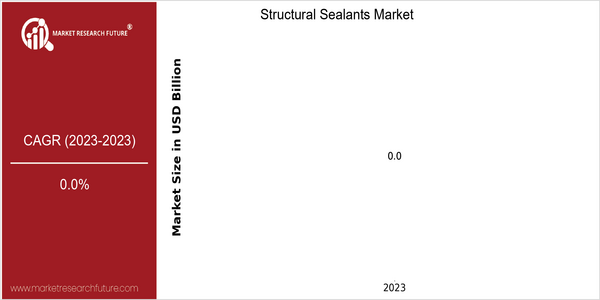
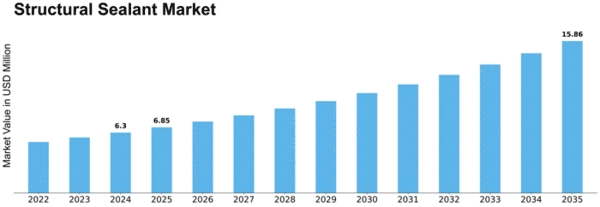

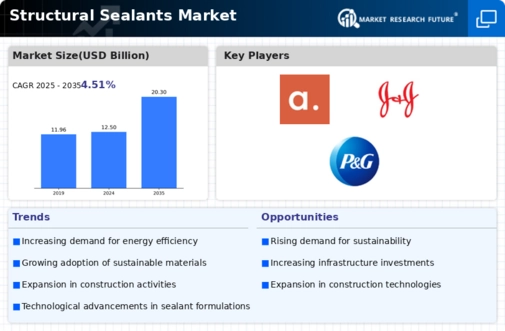


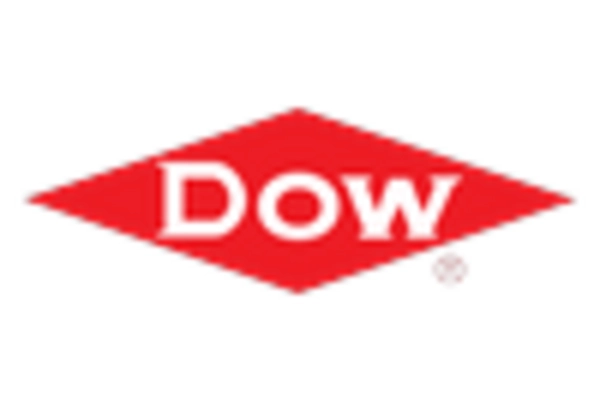
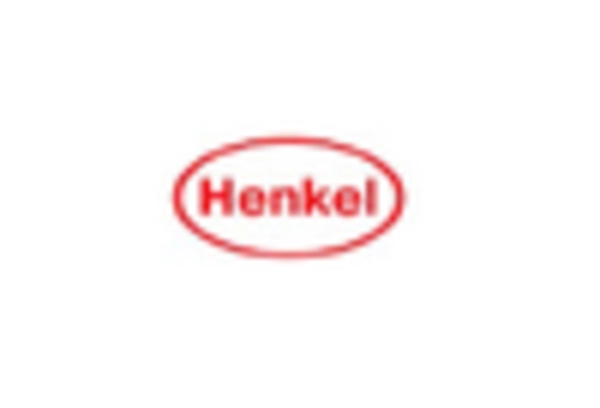
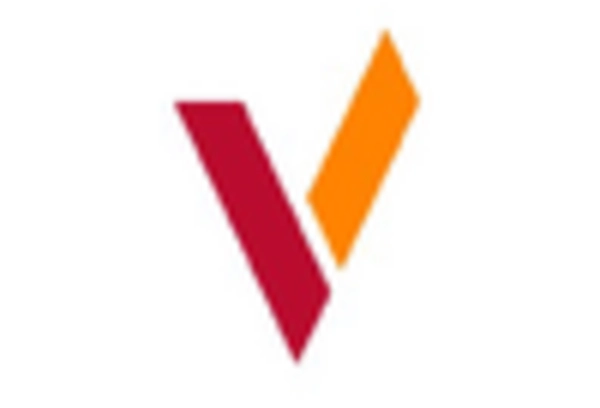
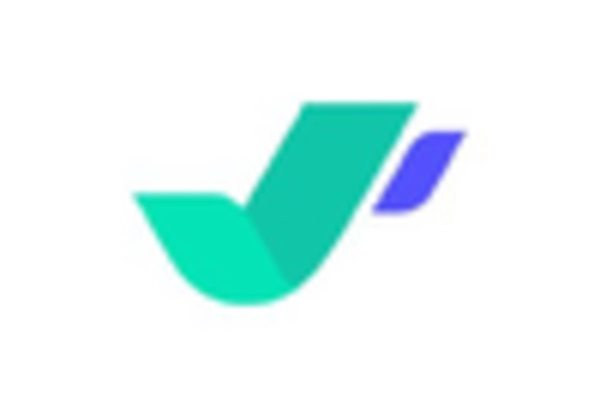









Leave a Comment